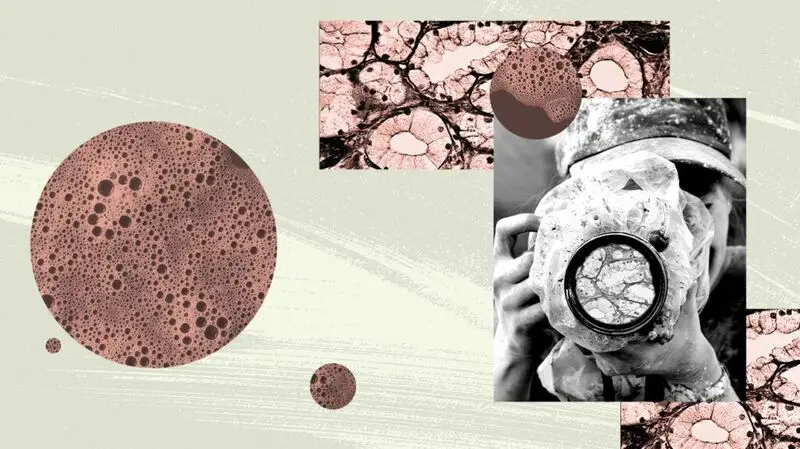
- A New York University study has found that kidney and nerve tissue cells can form memories much like brain cells.
- According to the study authors, their findings could help researchers better understand how to treat problems that affect memory.
- They also offer fresh insights into how human memory, as a whole, works.
- Another recent study, from ETH Zurich in Switzerland, has found that the memories of obesity stored in fat tissue cells may be partly responsible for the yo-yo weight loss effect.
- This study, conducted in mice with obesity, suggests that epigenetic changes affecting the nucleus, or central component, of a fat cell make it more difficult for individuals with obesity to maintain weight loss in the long run.
Memory is one of the most crucial aspects of our health and human identity. Through memory, we create our individuality, our specific relationships with the world we inhabit, and we learn to stay safe and make healthy choices.
Historically, the ability to make, maintain, and update memories has been tied to the human brain.
Increasingly, however, researchers are wondering if there is a whole-body memory, that is, if different parts of our bodies can also make and store a type of memory, and if so, how these other memories may be affected by and, in turn, impact aspects of our health.
Recently emerging evidence seems to suggest that human memory may be an even more complex affair than we have so far imagined.
In November 2024, a team of researchers from the Center for Neural Science at New York University (NYU) published a paper in
Speaking to Medical News Today, lead author Nikolay Kukushkin, DPhil, clinical associate professor of life science at NYU, told us that his “lab has been interested in memory at its most basic level for many years.”
“In the past, we studied sea slugs because they form very simple memories, allowing us to get to the bottom of how they form. What we have done now is to find an even simpler memory, which is common not just across different animals, but across all cell types,” Kukushkin explains of his team’s new study.
“What we were hoping to find […] is that generic cells of the body do not just have ‘memory,’ they have memory. It’s fully literal. […] [O]ur study shows that it’s not just a metaphorical connection — it is the same mechanism that retains information in brain cells and in kidney cells (same cellular tools), and it follows the same rules — namely, the spacing effect, the fact that experiences separated in time produce a stronger memory than the same amount of experience crammed in one go.”
— Nikolay Kukushkin, DPhil
The “spacing effect” refers to a phenomenon whereby learning, or the creation of a memory, occurs more effectively when information, or exposure to a stimulus, is spaced out.
In their study, Kukushkin and his team tested the formation of memories in laboratory experiments on two types of human non-brain cells: cells collected from nerve tissue and cells collected from kidney tissue.
They exposed both of these types of cells to chemical signals in a spaced-out pattern mimicking the way in which brain cells learn through exposure to such chemical information via neurotransmitters, or chemical messengers.
The researchers found that, much like brain cells, these other types of cells responded to the chemical signals by switching on a gene associated with memory storage.
This suggests that, like brain cells, other cells in the human body also accumulate memories.
The question that then arises is: What kinds of memories might cells around the body store? That, Kukushkin told us, “is a critical point.”
“Every system memorizes what it experiences — a sea slug memorizes sea slug things, a human memorizes human things, a kidney cell memorizes kidney cell things,” he explained, also referencing previous research on memory formation conducted on Californian sea slugs.
“We are not saying, as some people seem to imagine, that ‘mind’ memories (emotions, knowledge, skills) are stored in kidneys,” the researcher clarified. “Those things are still processed in the brain, and in the brain they are stored. But other cells have their own experiences.”
According to Kukushkin, the memories stored in non-brain cells in other parts of the body are memories strictly related to the roles that those specific cells play in human health.
Thus, he detailed:
“A kidney cell might be exposed to different patterns of salts, fluids, nutrients; based on those patterns, it might change how it acts in the future. One known example of this kind of memory is what happens to pancreatic cells when they are exposed to a large amount of sugar. In response, they release into the bloodstream a pulse of insulin, a hormone that promotes sugar absorption. This pulse reaches a certain peak, and then fades away. But wait 20 minutes and repeat the sugar load — now the pulse of insulin becomes twice as big.”
— Nikolay Kukushkin, DPhil
“You can see why that would be useful,” said Kukushkin, “if your sugar-absorbing capacity has been maxed out, you should increase it to make sure you don’t waste any nutrients.”
“But if you had it permanently increased, you’d probably be fatigued and hungry all the time. So adding a memory element into the pancreatic cell helps it adapt to the patterns of nutrients, just as ‘mind’ memories help us adapt to the patterns of experience,” he hypothesized.
While Kukushkin said the recent study conducted by him and his collaborators “is a proof of principle,” other recent research more clearly shows how memories stored in other parts of the body than the brain could affect Health outcomes in practice.
A study published in November 2024 in
The study, conducted by researchers from ETH Zurich, in Switzerland, supports the notion that lifestyle factors, such as unhealthy dietary patterns that can lead to chronic conditions like obesity, can trigger epigenetic memory formation by switching on genes that were not previously expressed.
Ferdinand von Meyenn, PhD, professor of nutrition and metabolic epigenetics at ETH Zurich, and one of the lead authors of this study, told MNT that “this project stemmed from [the team’s] curiosity about whether cells retain an epigenetic memory of prior metabolic states.”
“Epigenetic memory is well-known for explaining how daughter-cells maintain their transcriptional identity through cell division, playing a vital role in development, regeneration, and growth. But what about nondividing cells? They too must adapt to external stimuli and therefore undergo epigenetic adaptations,” he noted.
Through this study, von Meyenn and his colleagues wanted to figure out if a chronic condition like obesity would change the way in which adipose tissue reacts to external factors and, if so, if those changes were permanent or reversible.
“A well-documented observation is that the body tends to defend increased body weight, making weight loss and maintenance notoriously challenging,” von Meyenn pointed out, referring to phenomena like yo-yo dieting, which has, in turn, been linked to a heightened cardiovascular risk.
The researcher and his colleagues hypothesized that “this could be due to a type of ‘metabolic memory,’ where the body remembers and strives to return to its former state of obesity.”
To prove this hypothesis, the researchers, in the first instance, analyzed adipose tissue from overweight mice, as well as from mice that had shed the extra weight.
“We have found that adipocytes carry a ‘memory’ of obesity even after significant weight loss,” von Meyenn.
“In mouse adipocytes [fat cells] we find that this memory is encoded in the epigenome, which are modifications to the DNA or the proteins that the DNA is wrapped around, controlling the activity of genes. This epigenome is changed in adipocytes of obese mice and remains changed even after weight loss,” he went on to explain.
The second stage of the study involved confirming the findings in humans by analyzing samples of fat tissue from people who had undergone bariatric surgery as a form of treatment for obesity or overweight.
“This memory seems to prepare cells to respond quicker to an obesogenic environment [environment conducive to wight gain] — say, high-sugar, high-fat food — which could be linked to regain of body weight after a diet,” von Meyenn hypothesized.
“Our study indicates that one reason why maintaining body weight after initial weight loss is difficult is that the fat cells remember their prior obese state and likely aim to return to this state. This means that one would have to ‘fight’ this obesogenic memory to maintain body weight.”
— Ferdinand von Meyenn, PhD
“From an evolutionary perspective,” said von Meyenn, maintaining a memory that facilitates regaining, rather than shedding, weight “makes sense.”
“[H]umans and other animals have adapted to defend their body weight rather than lose it, as food scarcity was historically a common challenge,” the researcher explained. “On a societal level, this could offer some solace to individuals struggling with obesity, as it suggests that the difficulty in maintaining weight loss may not be due solely to a lack of willpower or motivation, but rather to a deeper cellular memory that actively resists change.”
One question remains, however: Can such body memories of obesity be “erased” to facilitate consistent weight loss?
This question does not, as yet, have a straightforward answer.
“Currently, there are no pharmacological interventions that are targeted against the epigenetic changes we have observed,” von Meyenn told us. “Tools are being developed that could target the epigenome, but these are very novel and have not been used in humans.”
He expressed cautious optimism that future research will bring the answers and solutions we seek:
“It is possible that maintaining a reduced or healthy body weight for long enough, is enough to erase the memory. Since metabolism is intricately involved in the regulation of the epigenome, it is also possible that certain nutritional or food supplements could help mitigate this effect. Additionally, future studies are needed to investigate whether incretin mimetics such as semaglutide can erase or modify this memory.”
— Ferdinand von Meyenn, PhD





